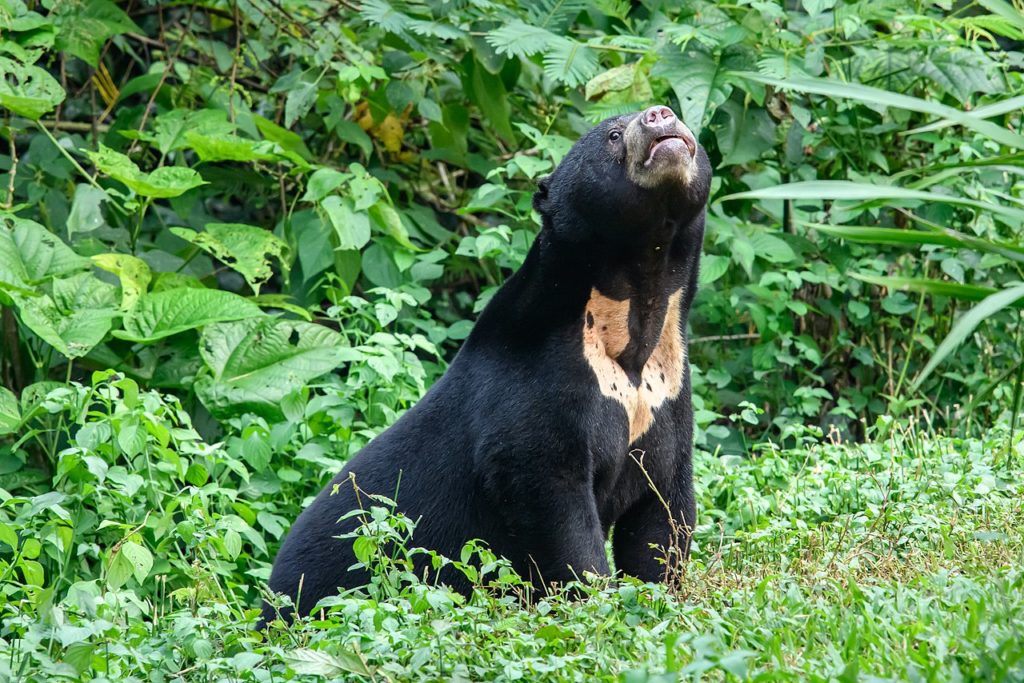It is the smallest bear, weighing 25–65 kilograms (55–143 pounds). It is stockily built, with large paws, strongly curved claws, small rounded ears and a short snout. The head-and-body length is between 100 and 140 cm (39 and 55 in), and the shoulder height is nearly 70 cm (28 in).
The snout is grey, silver or orange. The fur is generally jet-black, but can vary from grey to red. The hair is silky and fine, and is the shortest of all bear species, suiting their hot tropical habitat. The characteristic chest patch, typically U-shaped but sometimes circular or spotlike, varies from orange or ochre-yellow to buff or cream, or even white. Some individuals may even lack the patch.
 Sun bears lead the most arboreal (tree-living) lifestyle among all bears. They are mainly active during the day, though nocturnality might be more common in areas frequented by humans. Sun bears are omnivores and feed on a broad variety of items such as ants, bees, beetles, honey, termites and plant material such as seeds and several kinds of fruits
Sun bears lead the most arboreal (tree-living) lifestyle among all bears. They are mainly active during the day, though nocturnality might be more common in areas frequented by humans. Sun bears are omnivores and feed on a broad variety of items such as ants, bees, beetles, honey, termites and plant material such as seeds and several kinds of fruits
 The sun bear is an excellent climber; it sunbathes or sleeps in trees 2 to 7 m (6 ft 7 in to 23 ft 0 in) above the ground. Bedding sites consist mainly of fallen hollow logs, but they also rest in standing trees with cavities, in cavities underneath fallen logs or tree roots, and in tree branches high above the ground.
The sun bear is an excellent climber; it sunbathes or sleeps in trees 2 to 7 m (6 ft 7 in to 23 ft 0 in) above the ground. Bedding sites consist mainly of fallen hollow logs, but they also rest in standing trees with cavities, in cavities underneath fallen logs or tree roots, and in tree branches high above the ground.
There is a subspecies of sun bear (Helarctos malayanus euryspilus), found only on the island of Borneo. Their skulls are smaller than those of sun bears elsewhere.
According to Wikipedia














